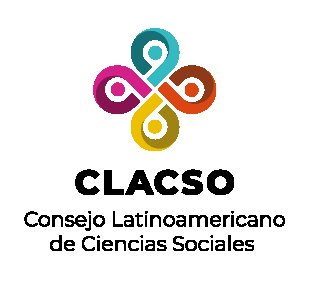Authors
Abstract
Abstract: The main objective of this research was to describe and compare the overall scores of resilience self-perception in 20 families in the urban sector of the Sagrada Familia community, Seventh Region of Maule, Chile.
From the aforementioned families, 10 were subject to social intervention plan and the other 10 were not submitted to this process.
The resilience scale (ERE) for children between 9 and 14 and the scale (SV-RES) for youth and adults 15 and older were used for this description. The study was carried out during the first and second semesters of 2010.
The hypothesis raised by the researchers stated that there should be a difference in the level of resilience self-perception in families subject to intervention plan compared with those not subject to a plan of action.
Resilience levels vary significantly at the end of the intervention process between the intervention group and the group without intervention, where the families subject to
intervention plan had higher levels of resilience self-perception than those families without the intervention plan.
Besides the presence of gender differences is identified; this is to say the resilience selfperception levels between men and women vary. In the case of women they present a better location in the average distribution compared with men, who are exceeded in both the first and the second measurement.
References
Cyrulnik, B. (2003). El murmullo de los fantasmas; volver a la vida después de un trauma. España: Editorial Gedisa.
________. (2009). Autobiografía de un espantapájaros. España: Editorial Gedisa.
Du Ranquet, M. (1996). Los modelos en trabajo social: Intervención con personas y familias. España:Editorial Siglo XXI.
Grotberg, E. (2003). Nuevas tendencias en resiliencia. Obtenido el 29 de junio de 2010, desde www.cidei.cl/Documentos/38.pdf
Hoffman, L., Paris, S., y Hall, E. (1995). Psicología del desarrollo hoy. Vol. 1 y 2. España: Editorial McGraw-Hill.
Kliksberg, B. (1999). Seis tesis no convencionales sobre participación. Documento presentado en el marco de Buenos Aires Sin Fronteras: Un espacio para el diálogo. Buenos Aires: Editorial Buenos Aires Sin Fronteras. Disponible en: http://estatico.buenosaires.gov.ar/areas/des_social/documentos/documentos/18.pdf
Kotliarenco, M., Cáceres I., y Fontecilla M. (1996). Estado del arte en resiliencia. Chile: CEANIM.
Manciaux, M. (2005). La resiliencia: resistir y rehacerse. España: Editorial Gedisa. Piña, M. (2004). Gerontología social aplicada. Visiones estratégicas para el Trabajo Social.Argentina: Editorial Espacio.
Quintero, A. (2000). La resiliencia: un reto para Trabajo Social. Ponencia presentada al X congreso Nacional de Trabajo Social. Cartagena de Indias. Colombia.
Saavedra, E. (2003). El Enfoque Cognitivo Procesal Sistémico, como posibilidad de intervenir educativamente en la formación de sujetos resilientes: estudio de casos. Tesis Doctoral, Universidad de Valladolid, España.
Saavedra, E., y Castro, A. (2009). Escala de resiliencia escolar (E.R.E.) para niños entre 9 y 14 años. Chile: CEANIM.
Saavedra, E., y Villalta M. (2008). Escala de resiliencia (SV-RES) para jóvenes y adultos. Chile: CEANIM.
Vanistendael, S. (2003). Resiliencia y espiritualidad el realismo de la fe. Oficina Internacional Católica de la Infancia, Ginebra.
Vega, G. (2003). La prevención desde el modelo de la resiliencia. Obtenido el 13 de agosto de 2010, desde http://www.proyectoarmonia.com/docs2/prevenciondesdemodelodela%20resiliencia.devega.pdf
Villalba, C. (2004). El concepto de resiliencia. Aplicaciones en la Intervención Social. Universidad Pablo de Olvide, España.
Visón, J. (2005). Guía (NICE) Nacional Institute for Clinical Excellence, Trastorno de EstrésPostraumático (TEPT). Guía clínica No. 26, London. Obtenido el 5 de julio de 2010, desde www.nice.org.uk

 PDF (Español)
PDF (Español)
 FLIP
FLIP
























